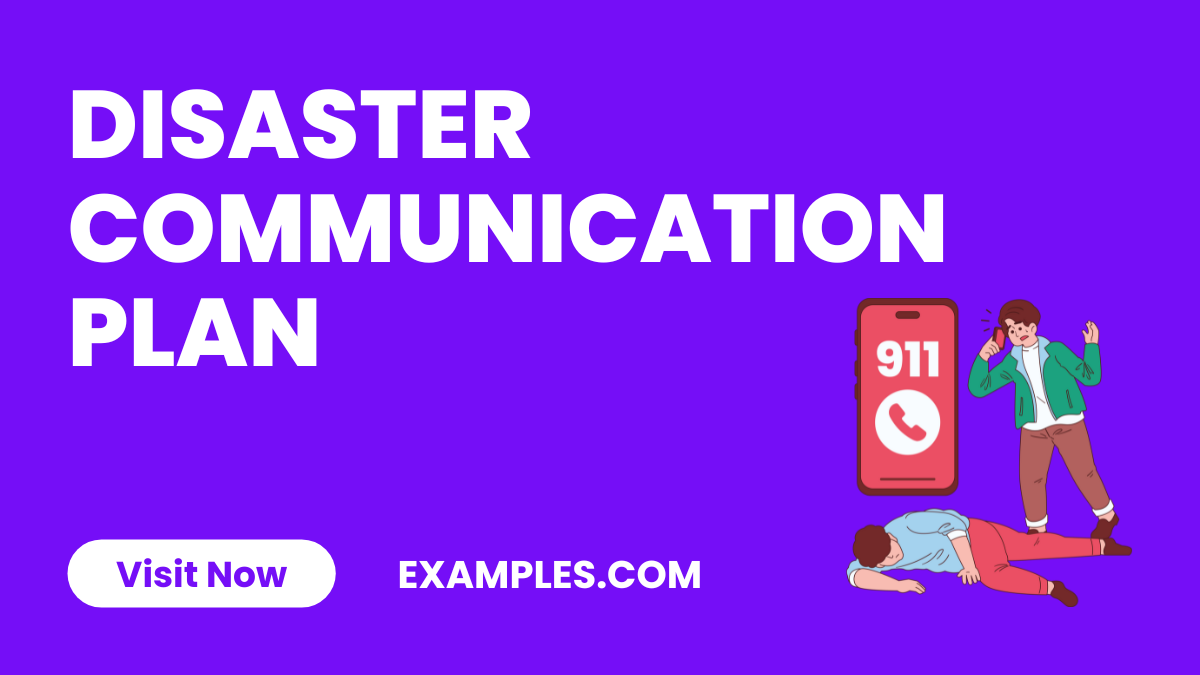5+ Disaster Communication Plan Examples
In today’s fast-paced world, communication is key, especially in relationships. A Disaster Communication Plan is crucial for navigating through rough patches. This guide provides a comprehensive overview, enriched with real-life communication examples, to help couples understand and address communication pitfalls. By focusing on various scenarios, we will explore effective strategies and solutions, offering a lifeline for those struggling with miscommunication, fostering a stronger and healthier connection. Dive into this guide to transform your communication landscape.
Disaster Communication Plan
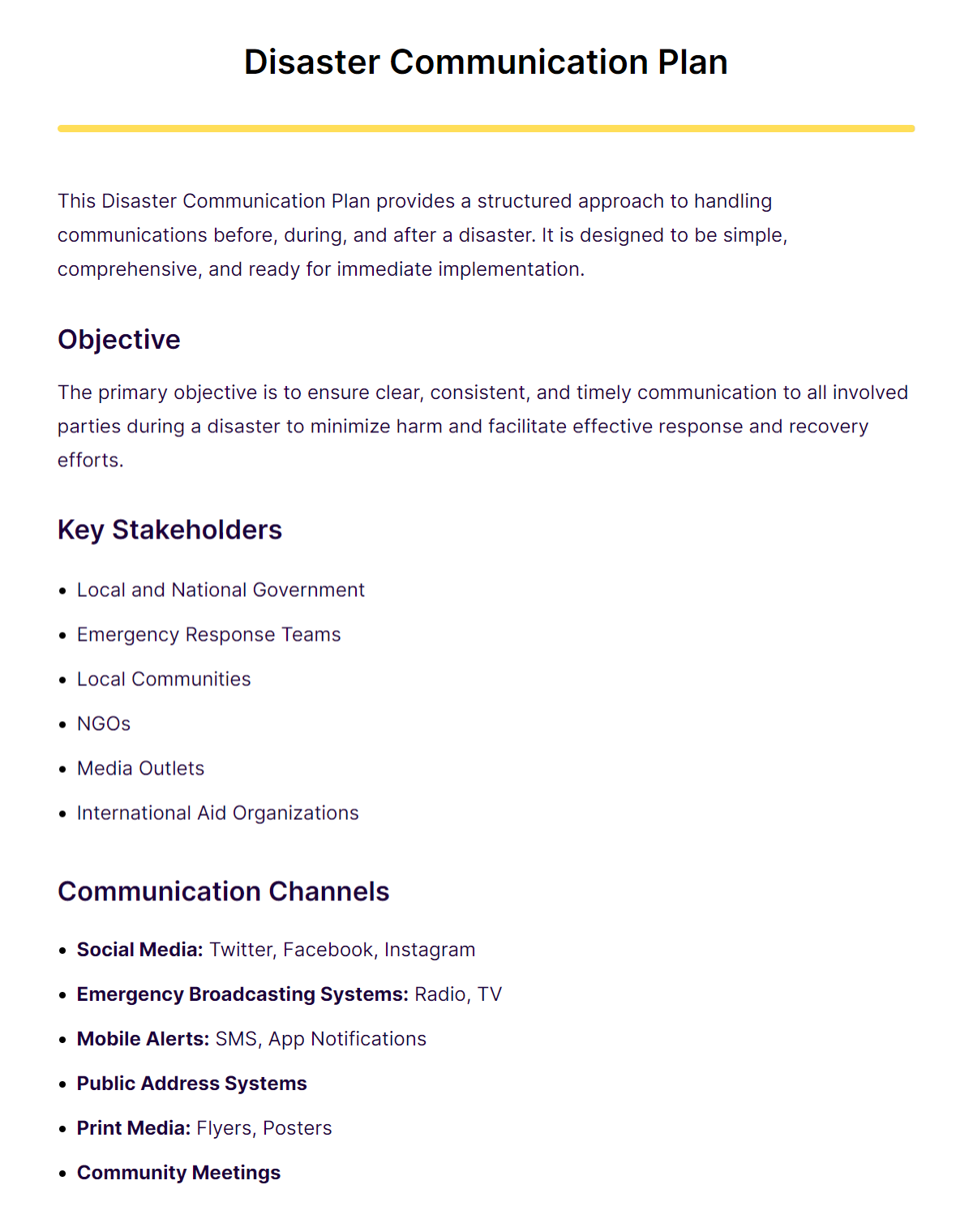
The Disaster Communication Plan outlines a structured approach for handling communications before, during, and after a disaster, ensuring clear and timely communication. The guide covers key aspects such as identifying stakeholders, choosing communication channels, and implementing phases of communication. It also includes practical templates for different stages and strategies for monitoring and evaluation. This resource is designed to help organizations manage communications effectively during various disaster stages.
Disaster Recovery Communication Plan
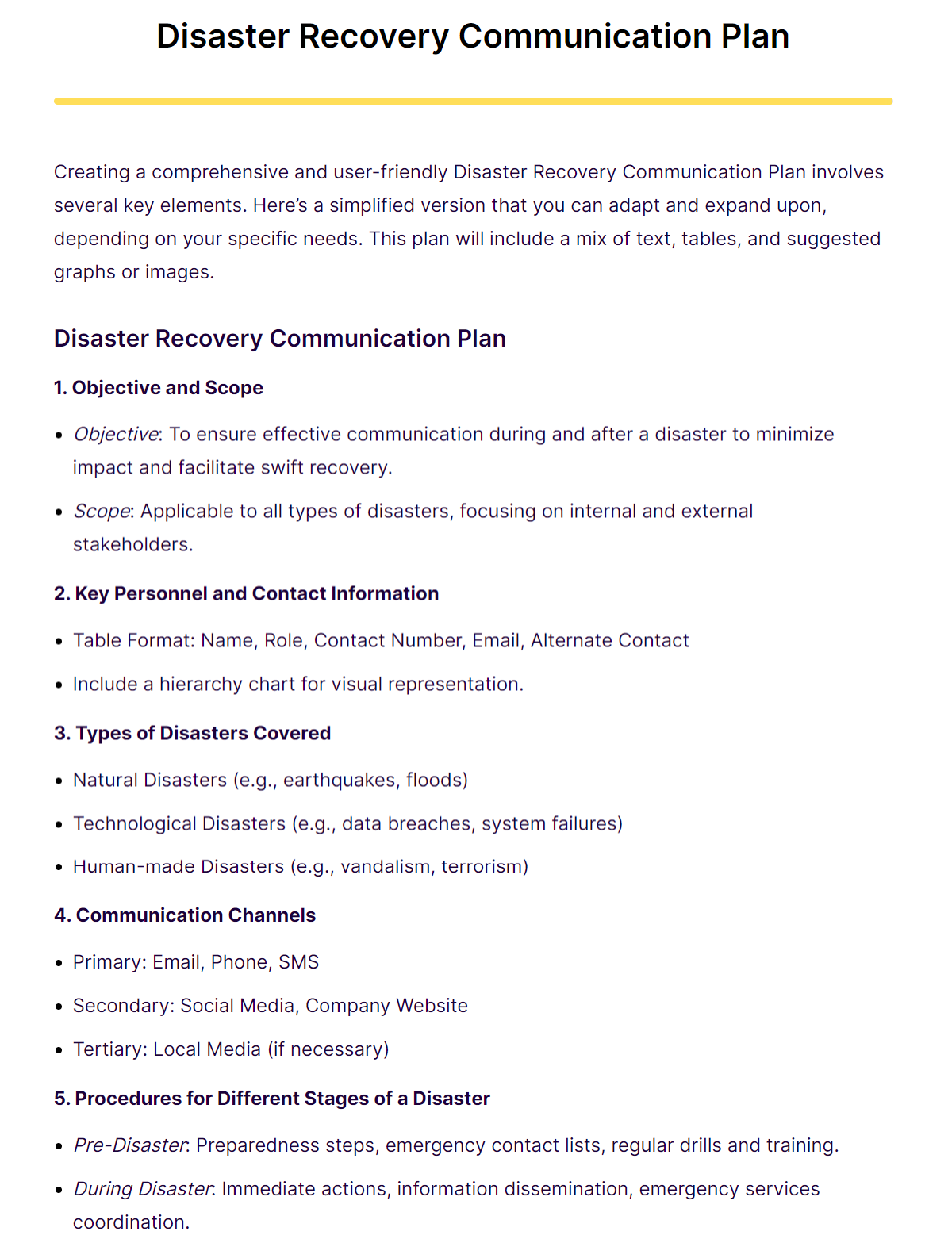
Disaster Risk Communication Plan
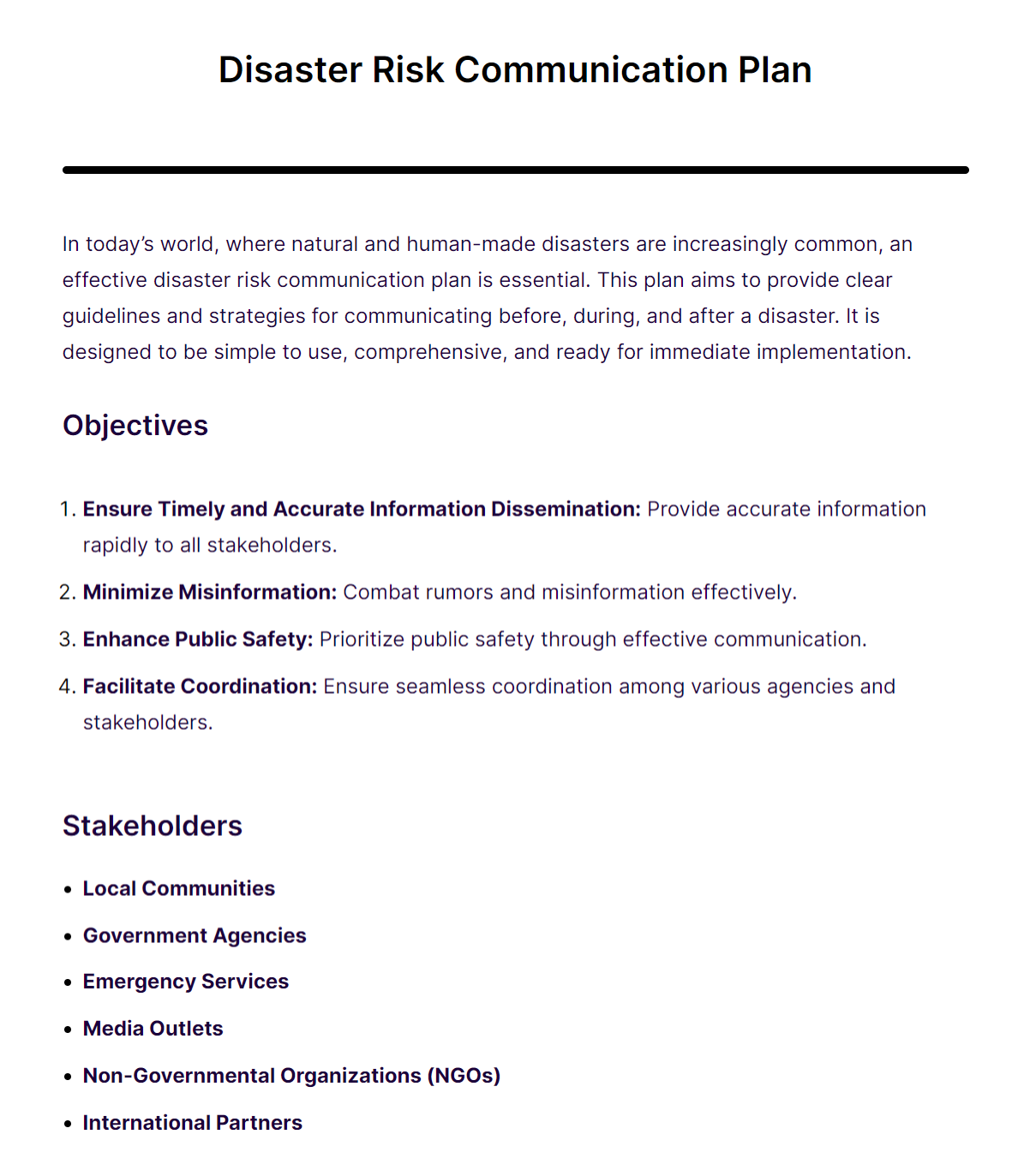
The disaster risk communication plan comprehensive guide for effective crisis communication. It emphasizes timely, accurate information dissemination, combating misinformation, and enhancing public safety. The plan includes strategies for pre, during, and post-disaster phases, involving awareness campaigns, emergency alerts, and status reports. It also details tools and technologies for communication, like social media and GIS mapping, and emphasizes regular drills and feedback surveys for evaluation and monitoring.
Family Disaster Communication Plan

The Family Disaster Communication Plan, emphasizing the importance of staying connected during emergencies. It details objectives like maintaining contact, ensuring safety, and facilitating reunification, along with key components such as emergency contacts, family information, meeting points, communication channels, disaster kit checklists, evacuation plans, and communication protocols. It underscores the necessity of regular practice and review for the plan’s effectiveness.
Crisis & Disaster Risk Communication Plan
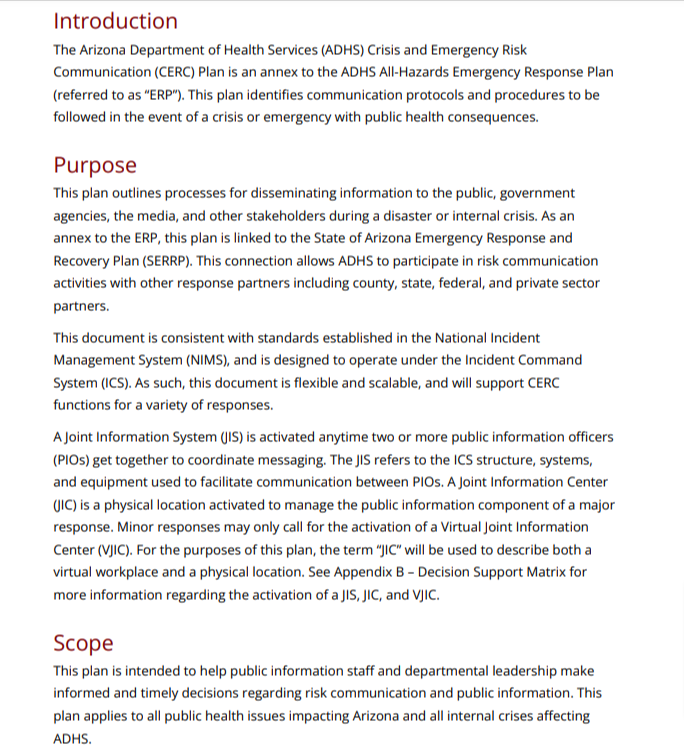
azdhs.gov
DownloadSocial Media and Disaster Communication Plan Checklist

ajg.com
DownloadEssential Elements of a Disaster Communication Plan
A Disaster Communication Plan in the context of relationships involves key elements that ensure its effectiveness and sustainability. These elements are crucial for maintaining a healthy communication dynamic, especially during challenging times. Here are the essential components:
- Clear Objectives: The plan should have specific goals, such as improving understanding, resolving conflicts, or enhancing emotional connection. Clearly defined objectives guide the direction of communication efforts.
- Identification of Communication Barriers: Recognizing factors like emotional disconnection, non-verbal misunderstandings, and expressive barriers is vital. Understanding these hurdles allows couples to address them more effectively.
- Preferred Communication Methods: Different situations may require different communication approaches. Whether it’s face-to-face discussions, written notes, or mediated conversations, choosing the right method is key.
- Active Listening Techniques: Active listening is crucial for showing empathy and understanding. It involves paying full attention, acknowledging feelings, and responding thoughtfully.
- Conflict Resolution Strategies: The plan should include specific strategies for dealing with disagreements, such as conflict avoidance management and finding common ground.
- Regular Check-ins: Scheduled times to discuss the relationship’s health and communication dynamics help in maintaining a proactive approach.
- Emergency Protocols: For intense conflicts, having a predefined protocol can prevent escalation. This might include taking a time-out, seeking professional help, or relying on a trusted mediator.
- Adaptability and Review Mechanisms: The plan should be flexible and open to changes based on its effectiveness and the evolving needs of the relationship.
- Mutual Respect and Trust Building: The foundation of any communication plan should be mutual respect and efforts to build and maintain trust, even in tough times.
- Emotional Support System: Incorporating support systems, like family, friends, or counselors, can provide additional perspectives and emotional support.
The Purpose of a Disaster Communication Plan
A Disaster Communication Plan is vital for effective information dissemination during emergencies. It prevents confusion and example of miscommunication, crucial for prompt and appropriate responses.
Such a plan should be a core part of an organization’s emergency management strategy, tailored to its specific needs. It involves media monitoring, effective message construction, and audience engagement. A key component is establishing a crisis communication team to ensure consistent, accurate messaging across all channels.
The plan must identify stakeholders and define roles for information dissemination.
- Coordinated responses across various channels.
- Utilization of credible sources.
- Focused communication with vulnerable groups.
- Addressing scientific uncertainties.
- Countering misinformation promptly.
- Empathetic and empowering communication.
It should outline communication methods, including social media, press releases, and website updates, with defined roles and guidelines for handling public feedback.
What is the Communication Plan in a Disaster Recovery Plan?
A communication plan in a disaster recovery plan is a vital component that outlines how an organization or individual will communicate during and after a disaster. This plan plays a crucial role in ensuring the safety and well-being of all involved parties and the effective continuation of operations. It encompasses a series of well-defined steps and procedures that guide communication before, during, and after a disaster.
Key Elements of a Disaster Communication Plan
- Identifying the Target Audience: This includes employees, stakeholders, customers, and the public. Understanding the audience is crucial for effective message delivery.
- Establishing Communication Channels: This could include emails, social media, text messages, public address systems, and traditional media.
- Defining Key Messages: Determining what needs to be communicated, including status updates, instructions, and safety information.
- Assigning Communication Responsibilities: Designating who will deliver the messages, ensuring they are trained and prepared to communicate effectively.
- Developing a Contact List: Maintaining updated contact information for all key personnel and stakeholders.
- Creating Templates and Scripts: Preparing templates for different scenarios can expedite the communication process during a disaster.
- Testing and Updating the Plan: Regularly testing the communication plan to identify gaps and making necessary updates to ensure its effectiveness.
Implementation Strategies
- Training and Drills: Conduct regular training sessions and drills for all members involved in the communication plan.
- Technology Utilization: Leverage technology for efficient communication, such as emergency notification systems and cloud-based platforms.
- Feedback Mechanism: Establish a feedback loop to assess the effectiveness of the communication and make improvements.
How to Develop a Disaster Communication Plan?
Developing a disaster communication plan is essential for ensuring safety and minimizing chaos during emergencies. This guide outlines the steps to create an effective and reliable plan to manage communications in the event of a disaster.
Step 1: Assess Communication Needs and Risks
- Identify Potential Disasters: Consider the types of disasters (natural or man-made) that are most likely to occur in your area.
- Understand the Audience: Determine who your plan needs to communicate with (employees, residents, emergency services, etc.).
- Assess Existing Communication Infrastructure: Evaluate the current communication tools and systems in place and identify any limitations.
Step 2: Set Clear Communication Objectives
- Define Goals: Establish what the communication plan aims to achieve, such as providing timely information, ensuring public safety, and coordinating response efforts.
- Prioritize Messages: Determine the most critical information that needs to be conveyed during a disaster.
Step 3: Establish Roles and Responsibilities
- Designate a Communication Team: Assign specific individuals or groups to handle communication tasks.
- Define Roles Clearly: Outline the responsibilities for each team member, including who is authorized to speak on behalf of the organization.
Step 4: Choose Effective Communication Channels
- Diversify Channels: Utilize a mix of communication channels like social media, email, text messages, public address systems, and traditional media.
- Consider Redundancies: Ensure there are backup channels in case primary methods fail.
Step 5: Develop Message Content and Templates
- Create Clear and Concise Messages: Develop message templates for different scenarios that are easy to understand and disseminate.
- Cultural and Linguistic Considerations: Ensure messages are accessible to all segments of the population, including non-native speakers and people with disabilities.
Step 6: Plan for Information Dissemination
- Timing: Determine when and how frequently information should be released.
- Verification Procedures: Establish processes for verifying information accuracy before dissemination.
Step 7: Establish Coordination with External Agencies
- Collaborate with Local Authorities: Coordinate with local emergency services, government agencies, and other relevant organizations.
- Share Resources and Information: Develop agreements for sharing resources and information during disasters.
Step 8: Train and Educate
- Conduct Training Sessions: Regularly train staff and stakeholders on their roles and the use of communication tools.
- Community Awareness: Educate the community about the communication plan and how to access information during disasters.
Step 9: Test and Revise the Plan
- Conduct Drills and Simulations: Regularly test the communication plan through drills and simulations.
- Gather Feedback: Use feedback from drills and real events to identify areas for improvement.
- Update Regularly: Revise the plan as needed to reflect changes in technology, infrastructure, and personnel.
What Should a Disaster Plan Communication Include?
A Disaster Communication Plan in relationships should be comprehensive yet focused. Key elements include:
- Communication Goals: Clearly defined aims like improving understanding or resolving conflicts.
- Key Issues Identification: Acknowledge main issues such as emotional disconnection or non-verbal misunderstandings.
- Effective Communication Channels: Choose the best modes of communication, from face-to-face discussions to written messages.
- Active Listening Techniques: Emphasize understanding your partner’s perspective through attentive listening and empathetic responses.
- Conflict Resolution Strategies: Include fair discussion rules, time-outs, and mediation methods.
- Regular Check-ins: Schedule consistent meetings to assess and improve communication dynamics.
- Emergency Protocols: Have plans for severe communication breakdowns, like seeking professional help.
- Review and Adaptation: Regularly update the plan to match the evolving relationship needs.
- Mutual Respect and Trust: Base the plan on mutual understanding, honesty, and consistency.
- External Support: Consider external help, like counseling, for complex issues.
A Disaster Communication Plan is essential for conveying information quickly and accurately during emergencies. It’s an integral part of any organization’s emergency management strategy, tailored to specific needs. Key elements include media monitoring, message construction, and audience engagement, with a focus on setting up a crisis communication team for coordinated messaging. The plan should identify stakeholders, outline communication methods like social media and press releases, and establish roles and responsibilities on developing a Disaster Communication Plan.
A family communications plan is crucial for emergency preparedness, ensuring contact among family members during disasters. Key components include maintaining a list of emergency contacts, establishing a family meeting place, programming “In Case of Emergency” (ICE) numbers, preparing family contact sheets, and creating individual contact cards. The plan emphasizes the importance of teaching children to call 911, understanding text messaging during network disruptions, and subscribing to local alert services. For more details on creating an effective family communications Disaster plan.



